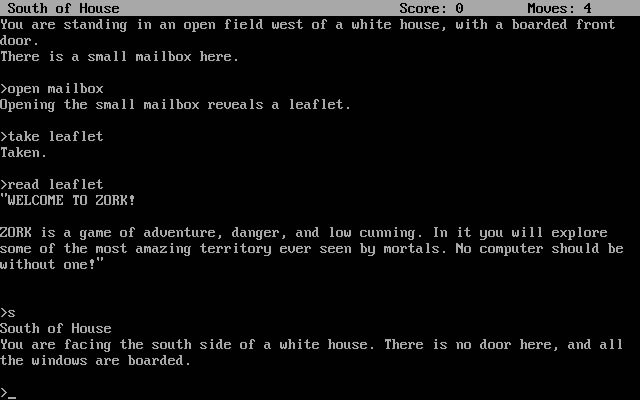The History of adventure games: Zork

Zork is one of the earliest and most influential text-based adventure games in the history of video gaming. Zork was a pioneering work in the genre of interactive fiction.
The game began as a project at MIT's Laboratory for Computer Science, where the developers created it on a DEC PDP-10 mainframe computer. The original version, often referred to as "Dungeon," was written in a programming language called MDL (a variant of LISP). Due to its popularity, the game was later adapted and split into three parts for commercial release by Infocom, a company founded by some of the original developers.
Zork is a text-based game, meaning that it has no graphics; players interact with the game purely through written commands. The player explores a vast underground world filled with puzzles, treasures, and dangers. The game is controlled by typing commands such as "go north", "take sword", or "open door", and the game responds with descriptions of the environment, actions, and results.
The game is considered a classic, and it has inspired numerous sequels, spin-offs, and imitations. The Zork series remains a significant part of gaming history and is often studied as an example of early video game design and interactive storytelling.
Did you know that...?
The name "Zork" was originally a nonsense word used by the developers as a placeholder title. It was a common term at MIT for an unfinished program. Despite its temporary nature, the name stuck, and the developers decided to keep it for the final release.
Zork was so popular that it became one of the most pirated games of its time. Infocom responded with some creative measures, such as including feelies (physical items like maps and props) with their games to deter piracy, since the game could require these items for solving puzzles.
Find out more about Zork I: The Great Underground Empire
